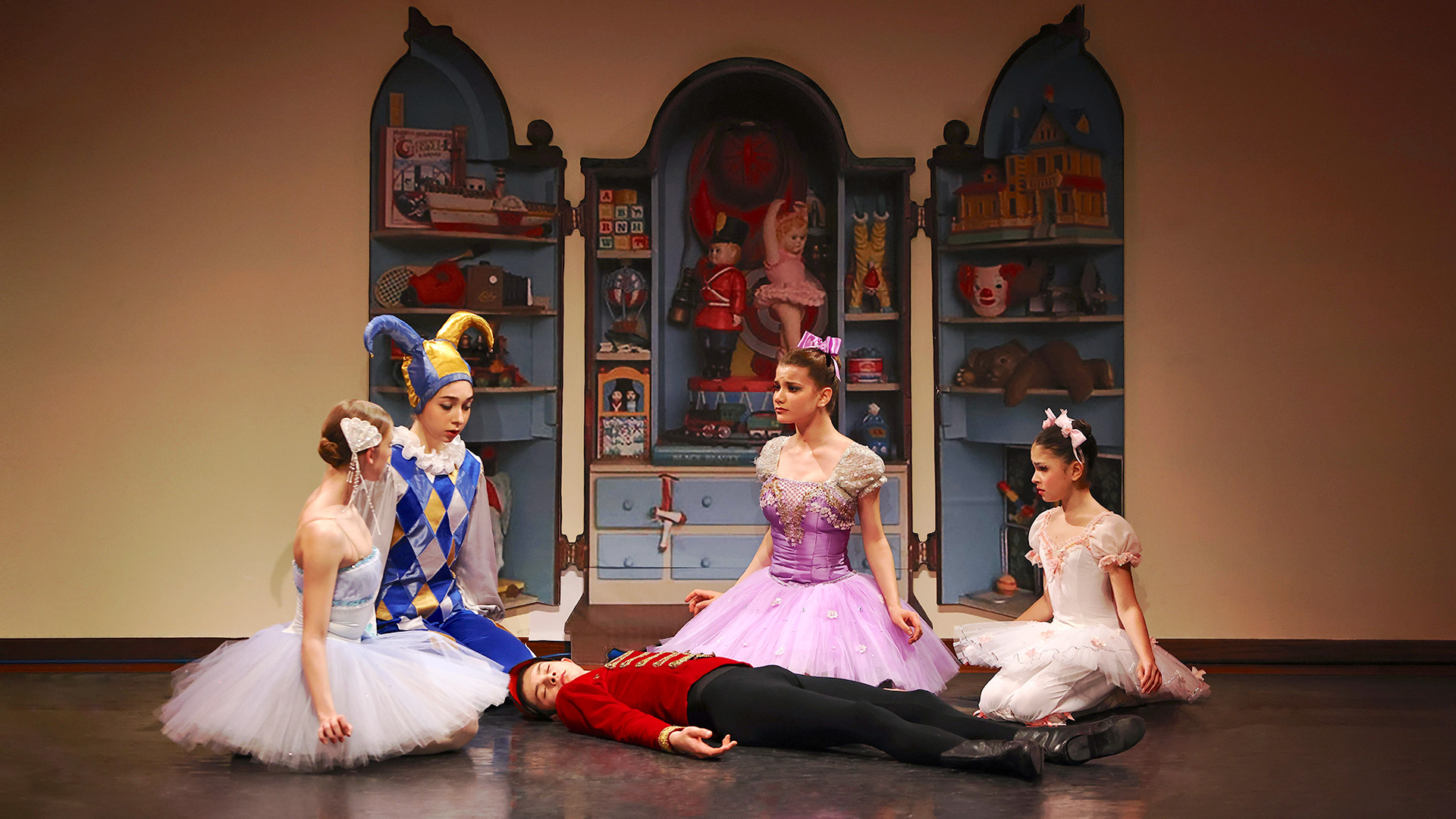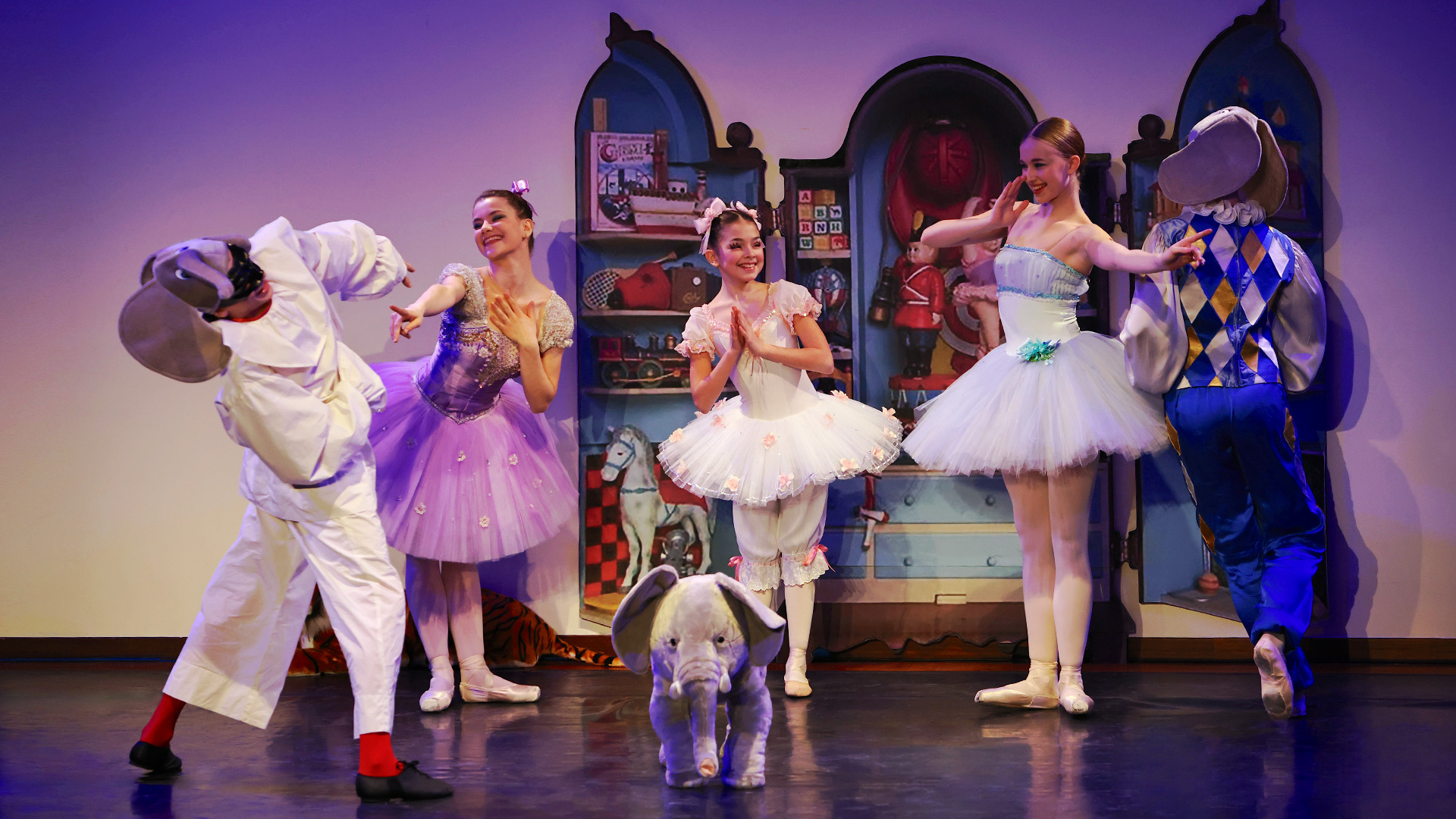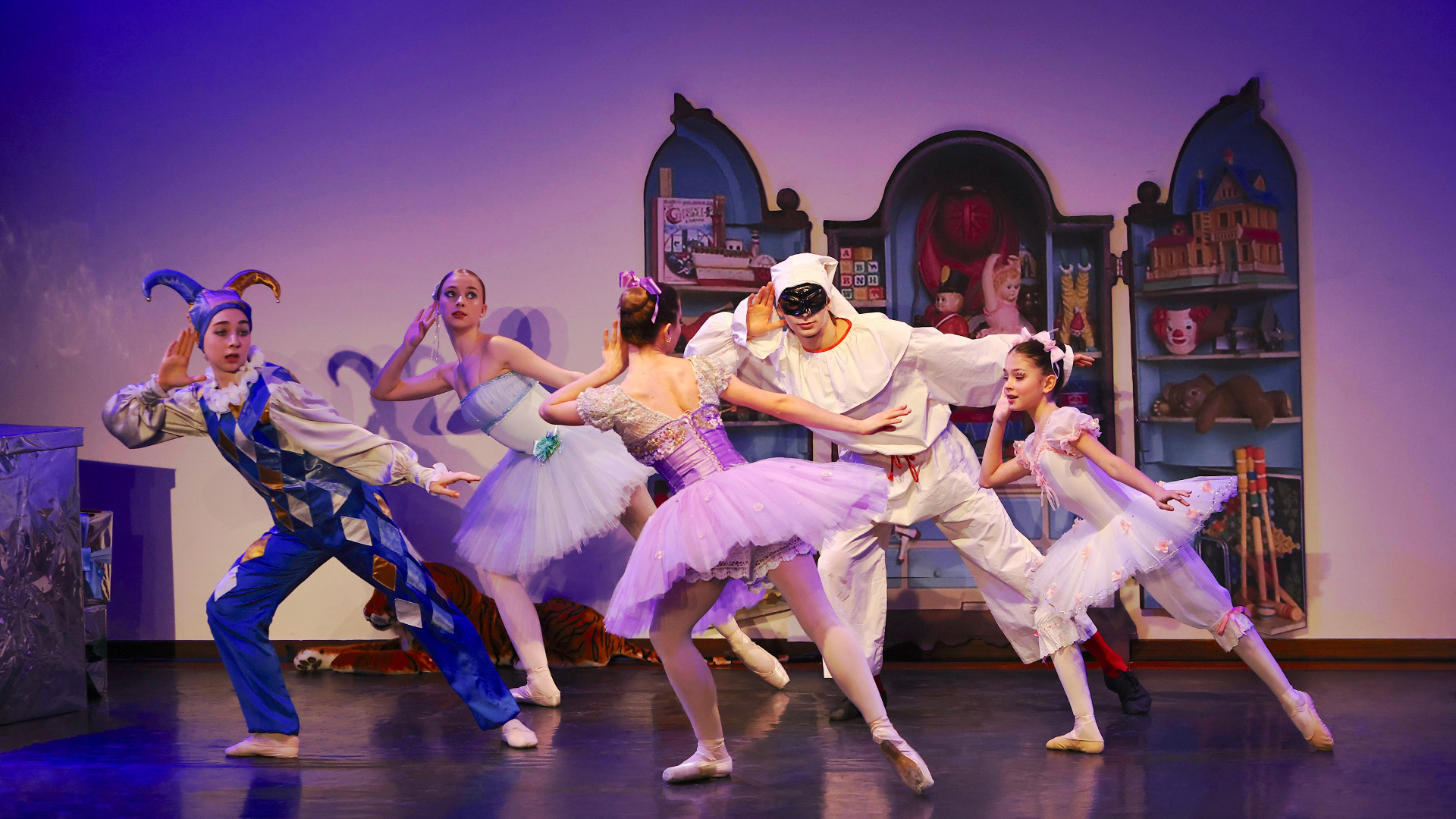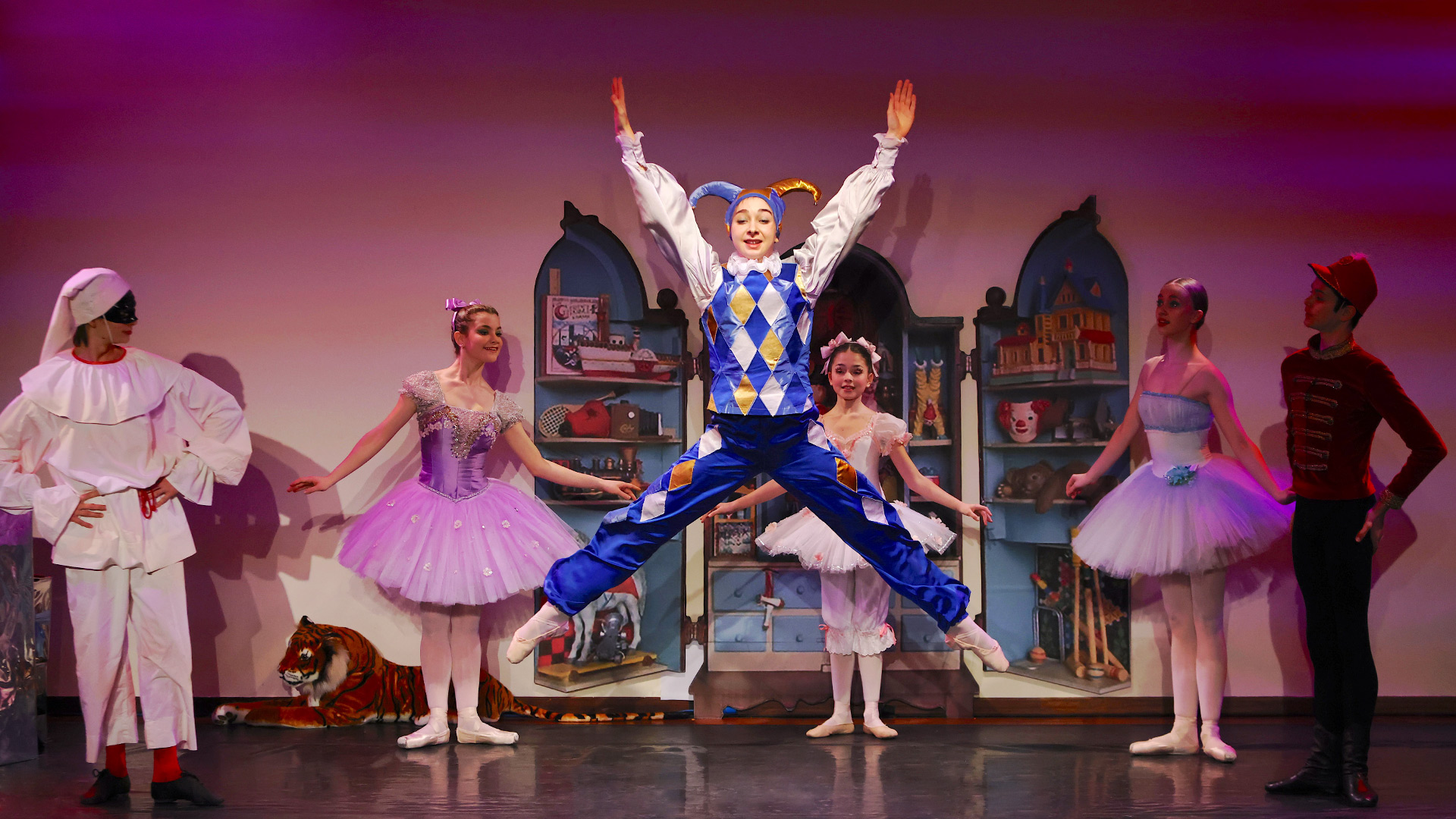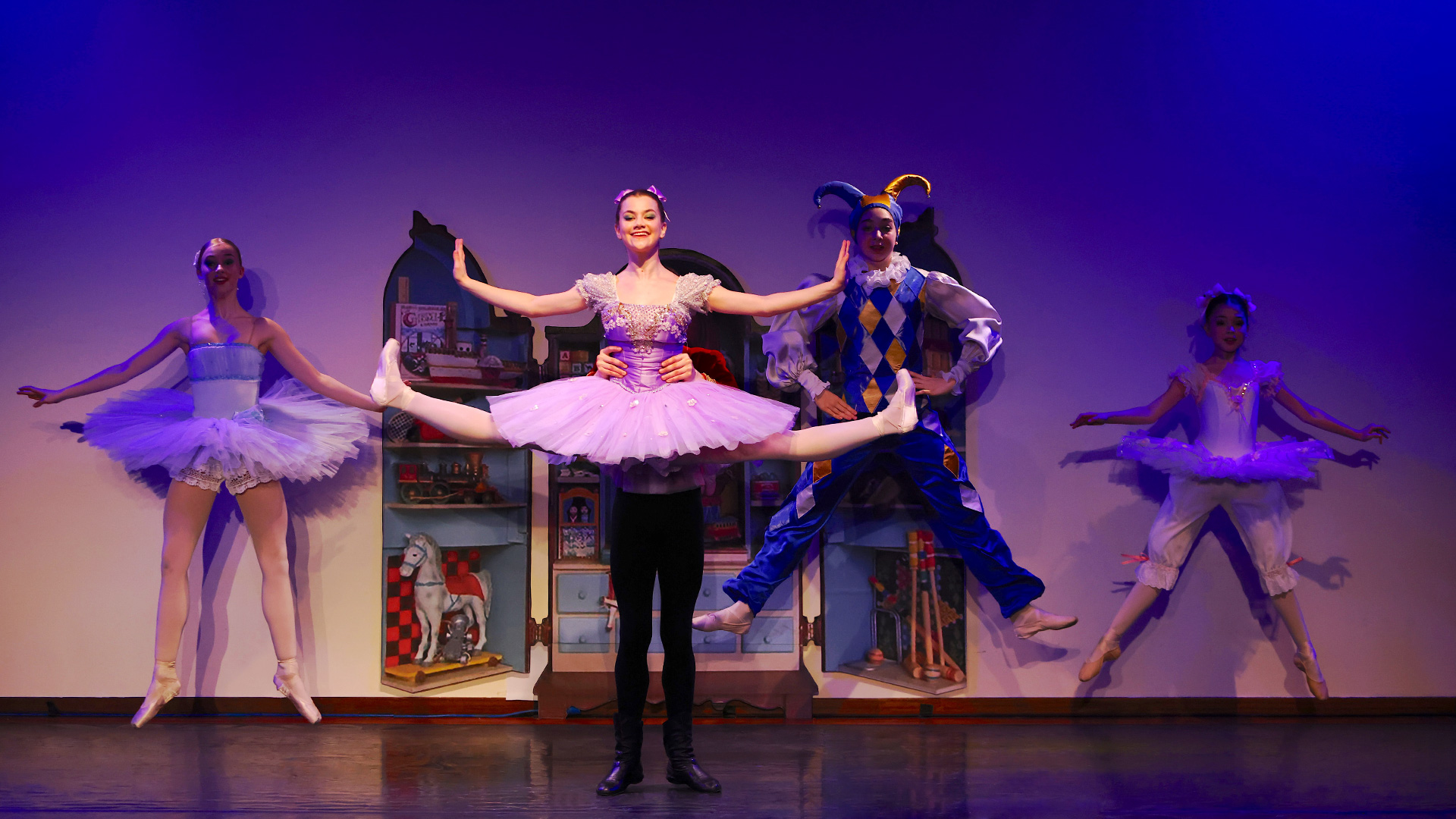Children’s Corner
Piano
Dario Bonuccelli
Valentina Messa (4/5/6/7/9/10/11/12)
La boîte à joujoux
Ballet for children in one act and four scenes
(1913 original version)
Choreography, Direction, Set, Costume and Lighting
Irina Kashkova
Piano
Dario Bonuccelli
Valentina Messa(4/5/6/7/9/10/11/12)
Balletto Fondazione Formazione Danza e Spettacolo “For Dance” ETS
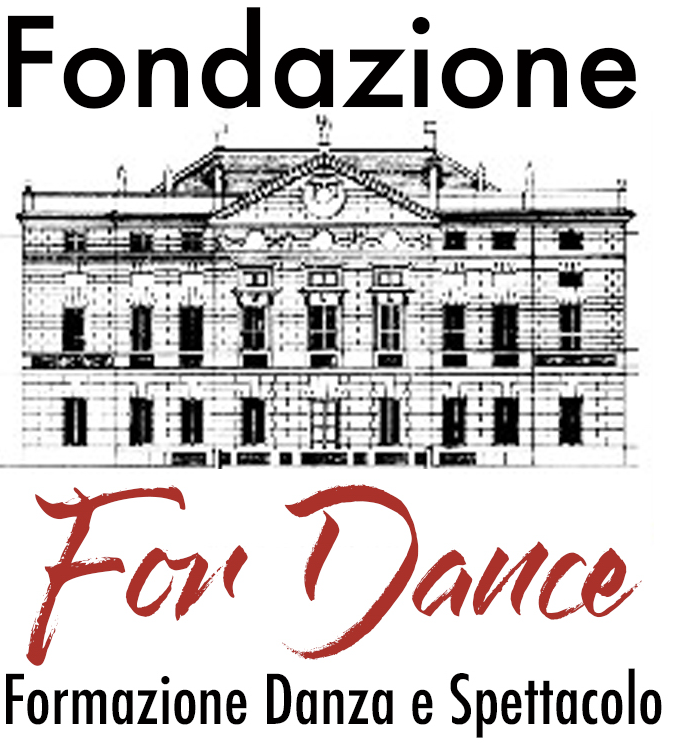
Children’s Corner is a suite for piano written by Debussy and inspired by his three-year-old daughter Emma-Claude, whom the work is dedicated to. The choice of the English title is an homage to the daughter’s tutor of British origins. Each of the six pieces coposing the suite describes an aspect of the childhood dimension. Debussy’s work presents the figure of the strict teacher in opposition to the creative child learning – Docteur Gradus ad Parnassum – the dimension of sleep with the elephant lullaby Jumbo’s Lullaby, a child’s perspective of the external world with the dance of snow in The Snow is Dancing. And again, the playful dimension with the portrait of the doll, of the sheperd boy and of the dancing puppet in Serenade for the doll, The Little Sheppherd and Golliwog’s Cake Walk.
La boìte à joujoux – The box of games – is a ballet for children in one act and four scenes composed in 1913. In such a case too, besides the very popular tradition of the marionette dance, Debussy was inspired by the world of children and, just as in Children’s Corner, music is rich in references and external fascinations. Following the first draft of the piano score, Debussy began orchestrating the ballet but he never completed it. After the death of the composer, André Caplet completed the orchestral part and the ballet was staged for the first time in 1919. In this story, toys become alive and jump out the box where they were put in the first place, living new adventures. Each of the three protagonists (a doll, a toy soldier and a Pulcinella puppet) is musicaly represented by a theme: a waltz, an military march, an ironic melody. The three characters experience a love triangle concluding with the happy marriage between the doll and the toy soldier, whom we see surrounded by their children at the end of the fourth scene, years later in the plot of the story. In the finale presents, all toys return into the initial box.
Ludovica Gelpi

